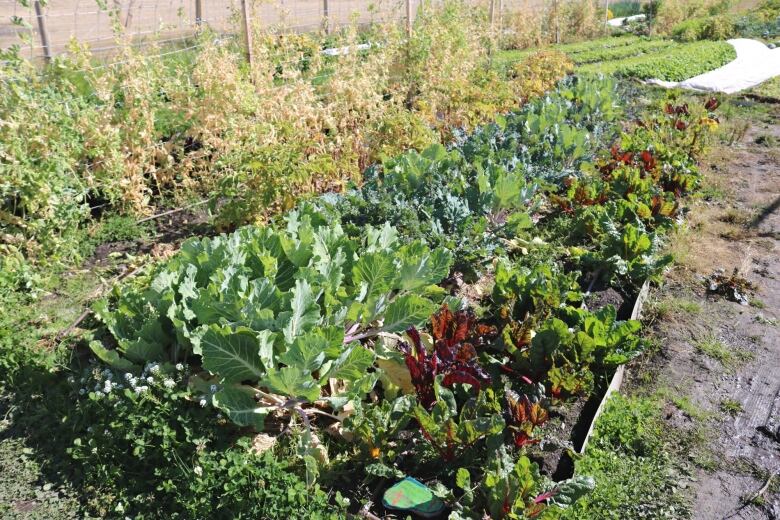Alpine Edible Schoolyards project feeds growing minds
'The more kids learn about where their food comes from, the better'

Most agree it's a good idea to teach kids about their local food system and how to grow edible gardens, but it can be a tricky project to take on in a school environment.
At Lawrence Grassi Middle School and Canmore Collegiate High School in Canmore, the Alpine Edible Schoolyards project incorporates urban agriculture into various areas of the curriculum, allowing kids to get their hands dirty with hands-on lessons in outdoor classrooms.
"It's so great when the kids say they don't want to play ball, they want to come into the garden," says urban farmer Christian Wright.
- Cardinale, a modern Italian joint in the East Village, pairs pasta with cocktails
- Madison's 12|12 brings nachos and workspace to an Inglewood patio
"Or when they tell me they planted their own garden at home. That's just the best."
Wright manages the program for the Canadian Rockies Public Schools.
This is their fifth growing season. During the school year, students help plan, plant crops and tend the gardens and chicken coop.They also learn about soil and composting (using clover cuttings and coffee grounds from local coffee shops they can't do regular composting as it attracts wildlife) and other earth sciences.

Even before the end of the school year, they start harvesting spinach, greens and radishes.
During the summer, Wright keeps the garden going, planting micro greens (which can be tricky for little fingers) and selling produce as it comes into season at the Canmore farmers market and to chefs at local restaurants.
In the fall, kids help with the bigger harvest, incorporating their own produce into food classes. The garden grows dozens of edibles:lettuce, beets, peas, cauliflower, cucumber, carrots,Brussels sprouts,celeriac and fenneleven edible flowers.
Wildlife experts consulted
Besides the usual challenges public schools face with this kind of program the lack of time and resources, and students being on summer holidays for the majority of the growing seasonrunning such an initiative in Canmore has the added obstacles of a cool climate and wildlife in the area.
They consulted wildlife experts about which crops to plant and put up fences around the gardens. At the high school, the garden is further protected via its location on a sloped roof.
Tomatoes, basil and winter greens are kept in the straw bale greenhouse they designed with the help of a local engineering firm and built themselves using supplies donated from local businesses.
They can't grow strawberries, apples and other fruit,due to the risk of predators, but there's no shortage of other cropsthe garden is robust even in September.

"Except for the cucumbers and peas, everything else can take a 5 Cnight," says Wright. "We focus on cold-loving plants because that's what we've got."
As many classes as possible spend time out in the garden, doing taste tours and curriculum-related lessons up until the first big frost.
"You see the 'Aha' moment, when they get that real, visceral experience of what they're learning, rather than just seeing it on a chalkboard," says Wright.
"Food education is importantthe more kids learn about where their food comes from, the better they are at making smart choices for our communities."













_(720p).jpg)


 OFFICIAL HD MUSIC VIDEO.jpg)
.jpg)



























































































